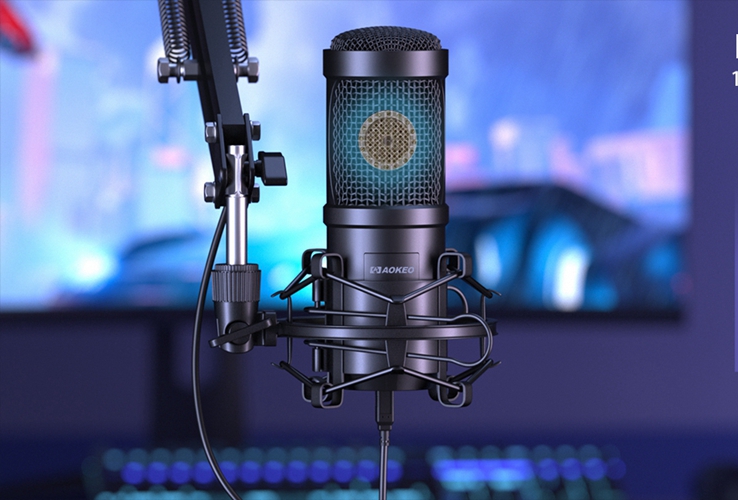Aokeo
Newsletter
Receive access to products and news.
Will be used in accordance with our Privacy Policy
Receive access to products and news.
Will be used in accordance with our Privacy Policy

You've likely seen recommendations online: a microphone shock mount and pop filter are essential for vocal recording. Let's quickly break down why these accessories matter, starting with the shock mount.

Yes, it's highly recommended! Imagine capturing the perfect vocal take, only to ruin it with avoidable vibration noise. That's the risk of skipping a shock mount. Prevention is always far better than a cure, especially when your mic sits on a desk or you're moving around nearby. The shock mount acts like a safety net, catching vibrations before they hit your sensitive microphone.
But... is it absolutely mandatory? Not always. Sometimes, mounting your mic perfectly without the shock mount is tricky – maybe it blocks your ideal position or angle. In those cases, it might be okay to temporarily skip it. Just handle your gear carefully, ensure your mic stand is rock solid, and minimize any knocks if the mount gets in the way.
Think of the shock mount as a vital piece of protective insurance. You might not need it for every single second, but it's essential for safeguarding your best recordings.
Speaking of Protection: Check out our best-selling AK-60 USB Mic Bundle, which includes a high-quality shock mount and pop filter for complete, ready-to-record performance!
Aokeo AK-60 USB Condenser Microphone bundle includes a boom arm, shock mount, and pop filter, making it perfect for recording, gaming, YouTube, meetings, and Discord. Easy USB setup ensures seamless compatibility with PCs and laptops.
Not usually. Most shock mounts are specifically engineered for particular microphone models or series. Why does this matter?
Weight Matters: Every microphone has a specific mass. Shock mounts are calibrated for this, so using one meant for a heavier or lighter mic can compromise its vibration-dampening efficiency or stability.
Do this: Hold your hand in front of your mouth and say "Peter Pan." Feel those sudden bursts of air on the 'P' sounds? Those are plosives.
The Problem: Plosive consonants like P, B, T, and K create strong air blasts when spoken or sung. When these hit a microphone's sensitive diaphragm directly, they cause loud, distorted "pops" or "thumps" in your recording – instantly ruining an otherwise clean take.
The Solution: A pop filter! Positioned between your mouth and the mic, its fine mesh (or metal screen).
Essential For: Vocal recordings, podcasts, voiceovers, streaming – anytime clear, professional audio matters. It's a simple tool that solves a very distracting problem.
If you’ve ever recorded your voice, you’ve likely heard it: those harsh "P-Pops" and piercing "S-Sibilance" that hit your ears like a kick drum. This isn’t just annoying – it actively ruins your audio. Here’s why a pop filter is non-negotiable for clean recordings:
Ah, the old sock trick! Technically, yes, stretched fabric over your mic can dampen plosives. But "can" doesn’t mean "should." Here’s why a real pop filter is lightyears better:
The Sock Method’s Dirty Little Secrets:
Why Purpose-Built Pop Filters Win:
Professional Microphone Pop Filter
The double-layered Aokeo O pop filter reduces air blasts, hissing, and plosive sounds, ensuring clear recordings. Ideal for singers, streamers, and actors, it offers flexible positioning and enhances vocal quality for professional performances.
2. The Minimalist: Ultra-Thin Steel Mesh (Aokeo B8-pop)
Aokeo B8-pop Filter
Compatible with 40mm-80mm microphones, perfect for vocal recording, YouTube videos, and streaming. Metal mesh design, compatible with most mics. (Not compatible with Yeti Blue)
No account yet?
Create an AccountGet notified about Aokeo products, news, and events.